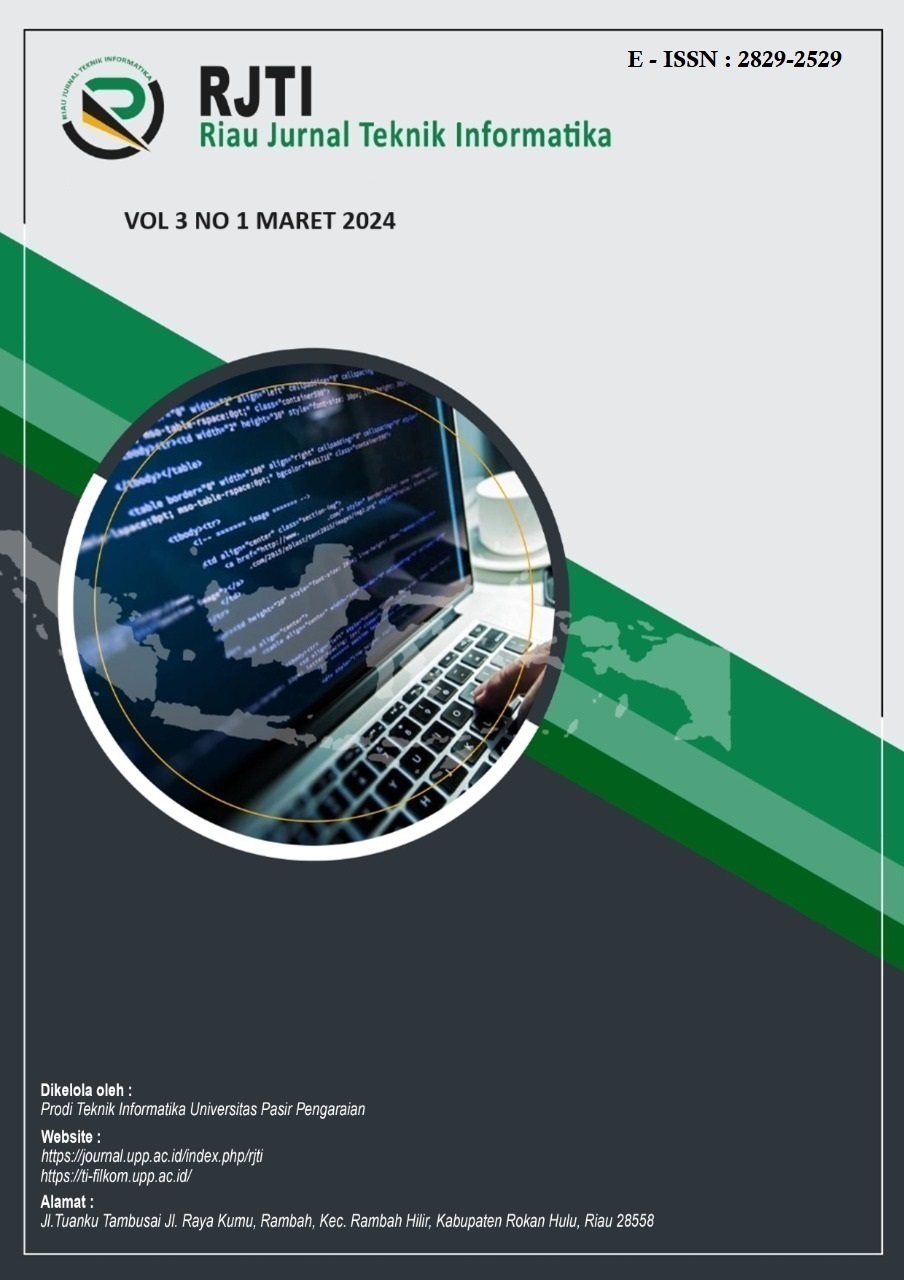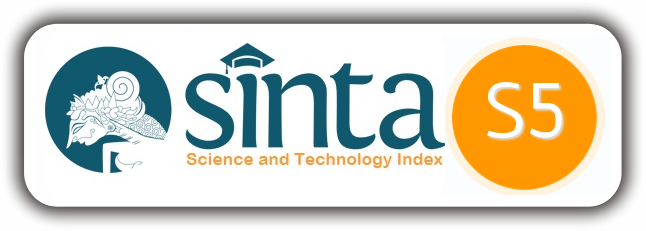Rancang Bangun Sistem Monitoring Kekeruhan Air Pada Mesin Rotary Drum Filter Berbasis Sensor TSS Dan Mikrokontroler ESP32
DOI:
https://doi.org/10.30606/rjti.v4i1.3305Keywords:
Rancang Bangun Sistem Monitoring Kekeruhan AIr Pada Mesin Rotary Drum Filter Berbasis Sensor TSS Dan Mikrokontroller ESP32, Keywords: Turbidity monitoring, rotary drum filter, TSS sensor, IoT, microcontroller.Abstract
Industrial wastewater treatment is an important process in maintaining environmental quality. One of the important parameters that must be monitored is the level of water turbidity. This study aims to design and build a real-time water turbidity monitoring system on a rotary drum filter machine using a Total Suspended Solid (TSS) sensor and an IoT-based microcontroller. This system is designed to automatically measure turbidity levels and send data to a web-based monitoring platform. The test results show that the system is able to detect turbidity variations with good accuracy and provide real-time readings. Implementation of this system can improve the efficiency of monitoring and maintenance of rotary drum filter units in wastewater treatment plants.
Keywords: Turbidity monitoring, rotary drum filter, TSS sensor, IoT, microcontroller.
Downloads
References
Widodo, S., et al. (2020). Teknologi Pengolahan Air Limbah Industri. Jakarta: Penerbit A.
Kurniawan, A. (2021). “Monitoring Kekeruhan Air Menggunakan Sensor TSS dan Arduino,†Jurnal Teknologi dan Rekayasa, 8(2), 45–52.
Nugroho, T. (2019). “Aplikasi IoT untuk Pemantauan Kualitas Air,†Jurnal Sistem Informasi, 13(1), 11–18.
Taufiq, R. (2022). Sensor dan Instrumentasi Lingkungan. Yogyakarta: Deepublish.
ThingSpeak Documentation. (2023). “Getting Started with ESP32 and ThingSpeak.â€.
Ma, H., Liu, Z., & Zhou, Y. (2021). Development of a low-cost turbidity sensor for continuous water quality monitoring. Environmental Monitoring and Assessment, 193(6), 381.
Rahim, M., & Suryani, N. (2020). IoT-based water quality monitoring system for real-time applications. Journal of Water and Environmental Technology, 18(2), 123–130.
Zhang, J., Wang, X., & Li, H. (2020). Performance evaluation of rotary drum filters in suspended solid removal. Water Science and Technology, 81(7), 1418–1426.
Chen, Y., Xu, X., & Lin, L. (2022). Smart wastewater treatment systems: A review of IoT applications. Journal of Environmental Management, 307, 114569.
Rasyid, R. (2021). and Engineering Analisa Kualitas Daya Listrik Pada Gardu Distribusi Universitas Khairun. 4(1), 28–40.
Andini, R. (2024). Analisa Perbandingan Metode Regresi Linier dan Regresi Non Linier Berdasarkan Data Kebutuhan Listrik Di Provinsi Jawa Tengah Pada Tahun 2021 dan 2023. 17(1), 30–40. Michalec, G. "Impact of Non-Linear Loads on Power Quality in Electrical Systems." IEEE Transactions on Power Delivery, vol. 36, no. 4, pp. 2021-2030, Aug. 2021.
Egorov, A. "Power Quality Analysis for 4400W Electrical Systems with Non-Linear Loads." International Conference on Renewable Energy and Power Engineering, pp. 1-6, Oct. 2021.
Syafrudin, et al. "Analysis of Linear and Non-Linear Loads in Electrical Power Systems." Journal of Electrical Engineering, vol. 15, no. 2, pp. 45-52, 2018.
Widiantara, et al. "Harmonic Distortion Caused by Non-Linear Loads in Power Systems." IEEE Conference on Power and Energy, pp. 1-7, 2016.
Radityatama, A. "Power Quality Improvement Techniques in Modern Electrical Systems." International Journal of Electrical and Computer Engineering, vol. 11, no. 3, pp. 1234-1242, 2021.
Meyyasa, K. "Analysis of Voltage and Current Harmonics in Power Distribution Systems." Journal of Power Electronics, vol. 19, no. 5, pp. 1021-1030, 2019.
Downloads
Published
How to Cite
Issue
Section
License
Copyright (c) 2025 Muhammad Nurul, Dina Maizana

This work is licensed under a Creative Commons Attribution-ShareAlike 4.0 International License.
Riau Jurnal Teknik Informatika provides open access to anyone so that the information and findings in these articles are useful for everyone. This journal's article content can be accessed and downloaded for free, free of charge, following the creative commons license used.

Riau Jurnal Teknik Informatika is licensed under a Creative Commons Attribution-ShareAlike 4.0 International License.









